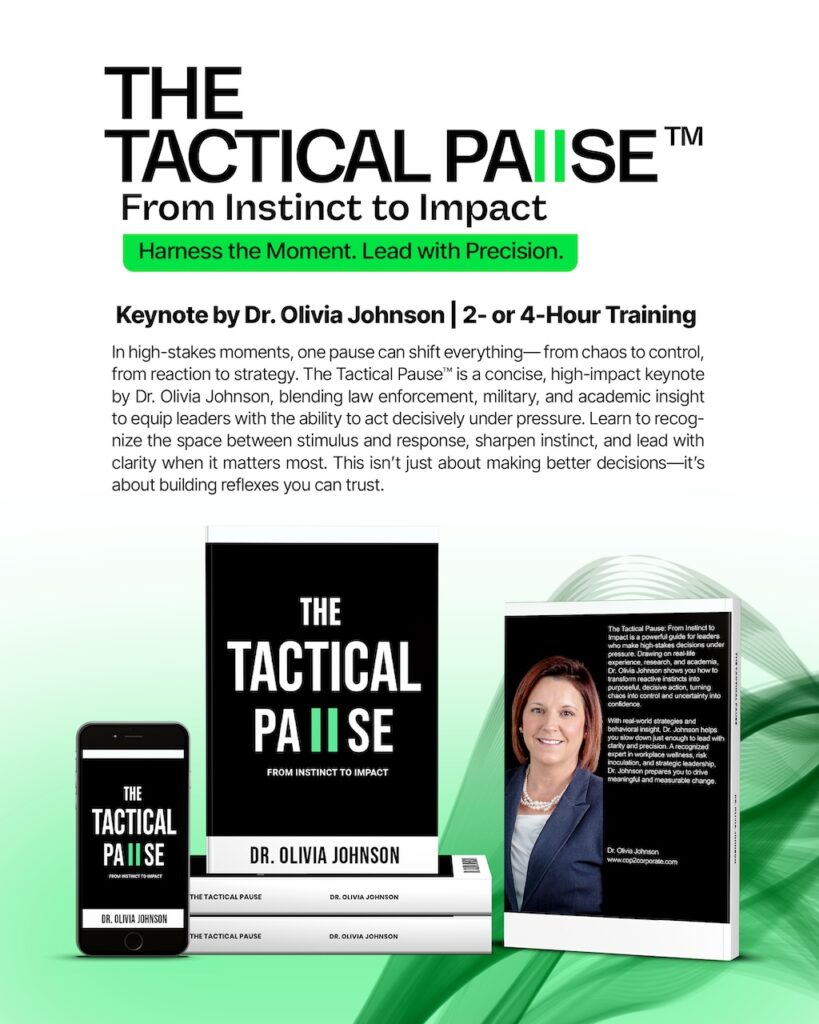In law enforcement and military operations, lives often depend on split-second decisions. In those critical moments, a well-trained leader knows when to act—and when to pause. That pause is not hesitation. It’s not fear. It’s strategy. It’s clarity under pressure. And it’s a principle that extends far beyond the battlefield or the street. The Tactical Pause™ might be the most underused leadership tool in corporate boardrooms, classrooms, hospitals, and anywhere high-stakes decisions are made.
The Tactical Pause is the intentional moment a leader takes to observe, assess, and realign before engaging. It’s the decision to stop reacting and start responding—with focus, not fear. In high-stress environments, the pause creates space between stimulus and action, allowing teams and individuals to pivot with purpose rather than spiral into chaos.
Think of the pause as a form of controlled stillness. It’s not passive—it’s tactical. It allows leaders to scan for hidden threats, read the room, and recalibrate the mission in real time. It’s about precision, not paralysis.
So, why is this concept so vital in today’s workplace?
Because pressure is no longer the exception—it’s the norm.
Leaders face a constant barrage of demands: deadlines, disruptions, data overload, and the daily drama of interpersonal dynamics. Without a tactical pause, decisions become reactionary, communication turns messy, and culture begins to crumble. Mistakes multiply not because of incompetence, but because of speed without strategy.
In law enforcement, officers are trained to use the Tactical Pause during active threat situations. They know that rushing into a scene without assessing crossfire risks or backup positioning can be deadly. The same logic applies in leadership. Acting without pausing can destroy trust, cost money, and unravel months of progress.
The Tactical Pause isn’t just a moment—it’s a mindset. It reflects emotional intelligence, discipline, and situational awareness. Leaders who consistently use the pause demonstrate maturity and command presence. They’re not rattled by urgency; they master it.
In a recent training session, I asked a group of executives, “What if your next mistake was entirely preventable—if only you had paused?” The room went still. Because the truth is, we often know when we’re pushing too fast. But we don’t always permit ourselves to stop. That’s the power of making the pause intentional.
Here’s how to implement the Tactical Pause in your environment:
- Train for it – Just like any tactical skill, this isn’t instinctive at first. Build it into scenarios, drills, or strategic planning sessions.
- Signal it – Let your team know when a pause is being taken. This builds trust and reinforces that reflection is part of the process.
- Use it in conflict – Emotions escalate quickly. A pause helps restore clarity and prevent destructive reactions.
- Reinforce it as strength – In your culture, celebrate those who pause with purpose, not just those who move fast.
The Tactical Pause doesn’t slow progress—it sharpens it. It’s the quiet between the beats, the calm before the command, and often, the difference between leading reactively and leading well.


